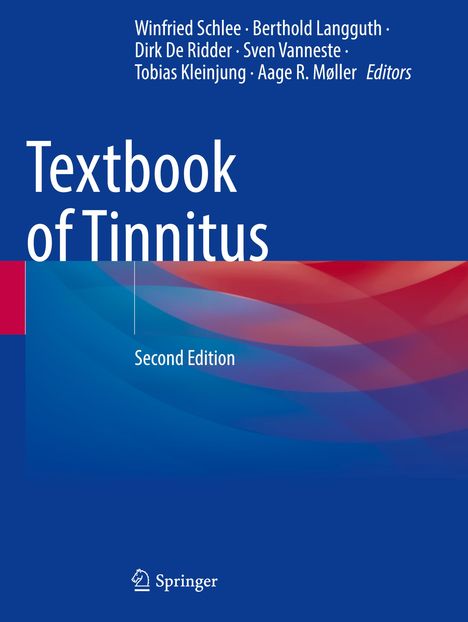Textbook of Tinnitus, Kartoniert / Broschiert
Textbook of Tinnitus
(soweit verfügbar beim Lieferanten)
- Herausgeber:
- Winfried Schlee, Berthold Langguth, Dirk De Ridder, Sven Vanneste, Tobias Kleinjung, Aage R. Møller
- Verlag:
- Springer, 03/2025
- Einband:
- Kartoniert / Broschiert
- Sprache:
- Englisch
- ISBN-13:
- 9783031356490
- Artikelnummer:
- 12301126
- Umfang:
- 824 Seiten
- Nummer der Auflage:
- 25002
- Ausgabe:
- Second Edition 2024
- Gewicht:
- 1967 g
- Maße:
- 279 x 210 mm
- Stärke:
- 44 mm
- Erscheinungstermin:
- 23.3.2025
- Hinweis
-
Achtung: Artikel ist nicht in deutscher Sprache!
Weitere Ausgaben von Textbook of Tinnitus |
Preis |
|---|
Klappentext
This book describes the theoretical background of the different forms of tinnitus (ringing in the ears) and detailed knowledge of state-of-the-art treatments of tinnitus. Tinnitus has many forms, and the severity ranges widely from being non-problematic to severely affecting a person's daily life. How loud the tinnitus is perceived does not directly relate to how much it distresses the patient. Thus, even tinnitus very close to the hearing threshold can be a disabling symptom. It can reduce the quality of life by generating anxiety and concentration problems, impairing the ability to do intellectual work, making it difficult to sleep, causing depression and sometimes even leading to suicide. Textbook of Tinnitus has filled a void by providing a comprehensive overview about the different forms of tinnitus, their pathophysiology and their treatment. However, since the publication of the first edition of the Textbook of Tinnitus in 2011, tinnitus research has dramaticallyevolved. In view of the substantial increase in knowledge, most chapters in this second edition are newly written and a few original chapters have had major updates. This edition has nine sections, covering the basics of tinnitus, the neurobiology of tinnitus, pathophysiological models, animal research, diagnosis and assessment, various forms of management and treatment, and finally, a look at the future of tinnitus and tinnitus research. The book will be of great interest to otolaryngologists, neurologists, psychiatrists, neurosurgeons, primary care clinicians, audiologists and psychologists, and students. Because of its organization and its extensive subject index, Textbook of Tinnitus, Second Edition can also serve as a reference for clinicians who do not treat tinnitus patients routinely.

